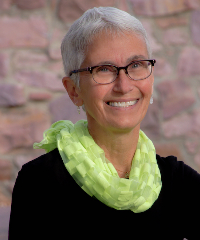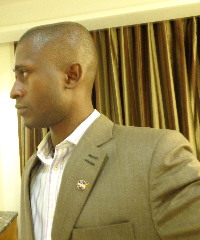Community Blogs
Community Blogs
Discover how the GLOBE community is engaging in all things GLOBE through the community blog posts below.
Learn how to create a GLOBE community blog post.
Filter By:
Blogs List
Research Questions: My experiment ran two adjacent triads of mosquito traps aimed to explore two questions: whether the local mosquito species in my area prefer to oviposit in containers with greater surface areas of water, and whether the same mosquitoes would prefer to oviposit in particular containers with varying types of water "bait".
Data: After 5 weeks of running this experiment, I failed to capture even a single mosquito larva. I'll go into further depth as to why this might've been later on in the "Conclusion" section. Both experiments suffered from a ...
Read More »
Posted in:
Curriculum:
STEM
GLOBE Science Topics:
EARTH AS A SYSTEM
EARTH SYSTEM SCIENCE
Investigation Areas:
EARTH AS A SYSTEM
MOSQUITOES
Primary Audience:
STUDENTS
TEACHERS
Student Research Reports:
INTERNATIONAL VIRTUAL SCIENCE SYMPOSIUM REPORT
MISSION MOSQUITO REPORT
During my field study, I observed that I found more mosquito larvae in dirty ditches under an open sky. Based on my observations, for my mosquito traps, the specific variables I chose to control were centered around the quality of water and trap wall materials. I made 3 traps: A deep ceramic pot with mud, water, sticks, and dead and live plants, a cut water bottle with clear water and black electrical tape wrapped around it, and a shallow, wide plastic dish filled with water and dead vegetation but relatively little other particulates.
1. Pot trap with ...
Posted in:
GLOBE Science Topics:
EARTH AS A SYSTEM
EARTH SYSTEM SCIENCE
Investigation Areas:
HYDROSPHERE
MOSQUITOES
Primary Audience:
STUDENTS
TEACHERS
Student Research Reports:
INTERNATIONAL VIRTUAL SCIENCE SYMPOSIUM REPORT
MISSION MOSQUITO REPORT
*Last Updated July 14, 2022
Purpose: For my experiment, I am testing what color container and type of water mosquitos are most attracted to.
Background research: During the weekly science session with Dr. Alison Parker, I learned more about mosquito habitats and where mosquitos breed. Mosquitos lay their eggs in/near water, and mosquitos in their early larvae and pupae stages live in water. This information guided me to choose my AOI coordinates in an area with standing water. The coordinates on the red line in the picture run along a ditch that leads into a ...
Posted in:
Curriculum:
STEM
GLOBE Science Topics:
EARTH AS A SYSTEM
Investigation Areas:
EARTH AS A SYSTEM
MOSQUITOES
Primary Audience:
STUDENTS
TEACHERS
I am currently testing the attractability of mosquitoes to black and white, with a control of transparent plastic. This could help us determine what clothes to dress in to avoid mosquito bites, and therefore the spread of disease, when going outside.
Materials:
Three 1 liter clear plastic containers
One 1 liter white plastic container
One 1 liter black plastic container
Five wooden sticks
Fish food
Hypothesis: Mosquitoes will hatch more larvae inside of a white conatiner than a Black container because the white stands out more in a natural environment.
I ...
Posted in:
GLOBE Science Topics:
GLOBE PROTOCOLS
EARTH AS A SYSTEM
EARTH SYSTEM SCIENCE
Investigation Areas:
EARTH AS A SYSTEM
MOSQUITOES
Primary Audience:
STUDENTS
TEACHERS
Student Research Reports:
INTERNATIONAL VIRTUAL SCIENCE SYMPOSIUM REPORT
MISSION MOSQUITO REPORT
Initial Setup
I decided to test how sunlight and container size would effect mosquito oviposition both in terms of how many larvae and what type of larvae are found in each container.
Testing For Sunlight
I found two locations in the same neighborhood with very different levels of sunlight.
My first location is a sunny and open back yard (with my cat):
My second location is a shady backyard near a golf course:
Testing For Container Size
At both locations I placed a 5 gallon home depot bucket and half of a plastic water bottle to compare the ...
Posted in:
Investigation Areas:
EARTH AS A SYSTEM
MOSQUITOES
Primary Audience:
STUDENTS
TEACHERS
Student Research Reports:
INTERNATIONAL VIRTUAL SCIENCE SYMPOSIUM REPORT
MISSION MOSQUITO REPORT
As my trap experiment, I'm comparing location, trap contents, and trap container (mostly the container, hence the title).
I have 8 traps set up across 3 locations - 3 in one, 3 in another, and 2 in the last. Each location's traps all share an origin for the water they use and the bait they use, but each of the traps in a location uses a different type of container - either a dark blue bucket, white bucket, black bucket, or clear soda bottle. As a further variation, the soda bottle traps are much smaller that the bucket traps, giving another layer to the data.
The first set of traps ...
The last 4 weeks of field trips and mosquito mapping have made me curious about the effect of water quality on the habitation of mosquito larvae in water bodies. So far, I have gone to a canal, creeks, ponds, and backyards. All these places vary in their water quality and mosquito larvae content.
<--- The creek I visited had mostly clear water
<--- Canal with poor water quality and lots of algae
Looking beyond AOI for vector-borne disease data
While my field research is limited to the area of interest (AOI), I researched New Jersey vector-borne surveillance reports ...
After reading the article "Container Type Affects Mosquito Oviposition Choice," I was inspired to test how a container's surface area, an abiotic parameter, may affect female mosquito oviposition choice (Parker et al). At first, I was really curious about how the ratio of surface area to volume in a container affected oviposition choice. Thus, I began my experiment by finding containers with different surface areas but of similar volumes so I could control the volume of water in each container and more effectively isolate whether surface area affected oviposition choice. The first ...
Posted in:
Investigation Areas:
HYDROSPHERE
EARTH AS A SYSTEM
MOSQUITOES
Primary Audience:
STUDENTS
TEACHERS
Student Research Reports:
INTERNATIONAL VIRTUAL SCIENCE SYMPOSIUM REPORT
MISSION MOSQUITO REPORT
Conclusion: Although no mosquitoes were found, this process has helped me understand the methodology of making an experiment and having to deal with hardships and setbacks. There were many potential sources of error both within the system of the experiment and with outside forces. Systematic errors could have stemmed from the trap design or location. The weather was a factor of random error. The weather varied across the duration of the experiment, sometimes drastically within a single week. The weather changes could have been counteracted with more frequent checking of the ...
Posted in:
GLOBE Science Topics:
EARTH AS A SYSTEM
EARTH SYSTEM SCIENCE
Investigation Areas:
HYDROSPHERE
MOSQUITOES
Primary Audience:
STUDENTS
TEACHERS
Student Research Reports:
INTERNATIONAL VIRTUAL SCIENCE SYMPOSIUM REPORT
MISSION MOSQUITO REPORT
I decided to test the impacts of fertilizer on mosquito breeding habitats.
Background:
I live in the Tampa Bay Area in Florida, and a major issue facing our ecosystems is fertilizer entering our waterways from runoff after people fertilize their lawns before it rains. This can lead to major algae blooms, like red tide, which are harmful to the rest of our marine organisms. Just last year, there was a particularly dangerous bloom that led to a fish kill where our waterways were littered with millions of dead fish.
However, the Tampa Bay Area contains more than just marine ...
Posted in:
Investigation Areas:
HYDROSPHERE
MOSQUITOES
Primary Audience:
STUDENTS
TEACHERS
Student Research Reports:
INTERNATIONAL VIRTUAL SCIENCE SYMPOSIUM REPORT
MISSION MOSQUITO REPORT
NYC is very hot and stuffy in the summer, but also has a lot of shade. A large part of this shade comes from large buildings, but most blocks have trees and there are some notable parks with a lot of tree cover as well. I get bitten all the time in the park when not in direct sunlight, but not so much when I'm downtown with the same level of shade.
I wondered if there was something to this natural shade (from trees) vs artificial shade (from buildings), or if the park in general was just more conducive to mosquito growth.
I also added cute little PLA 3D Printed frogs as ...
Posted in:
Investigation Areas:
MOSQUITOES
Primary Audience:
STUDENTS
TEACHERS
Student Research Reports:
INTERNATIONAL VIRTUAL SCIENCE SYMPOSIUM REPORT
MISSION MOSQUITO REPORT
Background: I live in a suburban area around 30 miles south of San Francisco in the West Bay, near the wetlands/the bay. Our county regularly treats the wetland trails for mosquitoes, and they also do aerial treatment, especially in the spring when mosquitoes like to breed.
Many previous literature papers concluded that mosquitoes prefer to oviposit in slightly alkaline water; as such, I predicted that there would be a higher abundance of mosquito larvae in the alkaline water.
To make an alkaline solution, I added baking soda to water; to make an acidic solution, I added aspirin ...
Posted in:
Primary Audience:
STUDENTS
TEACHERS
Student Research Reports:
INTERNATIONAL VIRTUAL SCIENCE SYMPOSIUM REPORT
MISSION MOSQUITO REPORT
Selecting the right satellite images and products can be challenging! In this blog, I am sharing my learning and experience of working with satellite images for image classification and visualization.
The use of remote sensing satellite images to measure water qualities is a viable option to predict and control vector-borne diseases. Space agencies, such as NASA and ESA, provide open access to both acquired images and curated data/products for scientific research. Data is available both in the raw format as well as products (e.g. Top-of-Atmosphere (TOA) reflectance, ...
Posted in:
Primary Audience:
STUDENTS
TEACHERS
Student Research Reports:
INTERNATIONAL VIRTUAL SCIENCE SYMPOSIUM REPORT
MISSION MOSQUITO REPORT
I currently have four traps in operational order. Two at one of my AOIs and two in backyard that were prototypes that I've left up because they seem to be performing admirably. I My traps have been up for about a week, the prototypes were deployed a day before the other two, and I haven't seen any mosquitos or mosquito larvae. I did take care to note that I used dog food in my trap, specifically the dry kibble variant instead of ones that come in chunks or are wet. I choose dog food over decomposed plant-based organic material because I noticed that the few times I've accidentally ...
Posted in:
GLOBE Science Topics:
EARTH AS A SYSTEM
EARTH SYSTEM SCIENCE
Investigation Areas:
EARTH AS A SYSTEM
MOSQUITOES
Primary Audience:
STUDENTS
TEACHERS
Student Research Reports:
INTERNATIONAL VIRTUAL SCIENCE SYMPOSIUM REPORT
MISSION MOSQUITO REPORT
My involvement in the Stem Enhancement in Earth Science (SEES) program started sometime around early spring 2021. The involvement was preceded by a strong recommendation from Dr. Kevin Czajkowski, PI, GLOBE Mission Earth, The University of Toledo.
Indeed, to me as a member of the GLOBE International STEM Network (GISN), my participation in SEES became an opportunity to invoke the GISN mandate which includes to mentor and inspiring ...
Posted in:
Curriculum:
ASSESSMENT AND EVALUATION
EDUCATION RESEARCH
SCIENCE AND MATH
TECHNOLOGY
STEM
Diversity, Equity, and Inclusion:
DIVERSITY, EQUITY, AND INCLUSION
Field Campaigns:
WATERSHEDS
SMAP
SURFACE TEMPERATURE
GPM
GLOBE Science Topics:
EARTH AS A SYSTEM
Investigation Areas:
ATMOSPHERE
HYDROSPHERE
PEDOSPHERE (SOIL)
BIOSPHERE
Learning Activities:
EARTH AS A SYSTEM
Primary Audience:
PARTNERS
SCIENTISTS
STUDENTS
During the SEES internship, I got the opportunity to do data collection fieldwork. This required me to go around my neighborhood and take pictures of specific points that had been calculated using a Python notebook. Some of these points were in parts of my neighborhood that I’d never been to, despite being in my fourteenth year of living there. I even saw a pack of wild javelinas in a particularly remote spot! The task definitely took longer than I expected, but it felt good to know that I had contributed data that would actually help NASA scientists.
I also got to brainstorm my ...
Posted in:
Investigation Areas:
EARTH AS A SYSTEM
MOSQUITOES
Primary Audience:
STUDENTS
TEACHERS
Student Research Reports:
INTERNATIONAL VIRTUAL SCIENCE SYMPOSIUM REPORT
MISSION MOSQUITO REPORT
Did you know that clouds can both warm and cool our planet? Keeping an eye on clouds helps NASA study our climate. You can notice some of these changes by just looking at the clouds.
Here are some examples you might have already noticed:
Do all clouds cast shadows? Low thick clouds tend to cast the most shadows. The shadows show you how the cloud is blocking the light from the sun from reaching the ground. This is similar to you placing your hand in front of your eyes when it is too sunny. Your hand is blocking the light from reaching your eyes. This is the same as the ...
Posted in:
Curriculum:
SCIENCE AND MATH
STEM
GLOBE Science Topics:
BACKYARD SCIENCE
CLIMATE
CLIMATE CHANGE
GENERAL SCIENCE
GLOBE PROTOCOLS
EARTH AS A SYSTEM
SCIENTIST SKILLS
Investigation Areas:
ATMOSPHERE
Primary Audience:
ALUMNI
COUNTRY COORDINATORS
PARTNERS
SCIENTISTS
STUDENTS
TEACHERS
TRAINERS
Stratus clouds are one of the three main types of clouds. Remember that there are many types of clouds that fall into three main categories: cumulus, stratus, and cirrus. Using hand-motions , we would stretch out our hands as far out as we could to mimic a stratus cloud. There are stratus-type clouds at all three basic altitude levels. These are: stratus clouds (low level), altostratus clouds (mid level), and cirrostratus clouds (high level). When stratus-type clouds are present, your skies will most likely be overcast or the cloud cover is 90% or more. Note, there is a ...
Posted in:
Curriculum:
SCIENCE AND MATH
STEM
GLOBE Science Topics:
GENERAL SCIENCE
GLOBE PROTOCOLS
Investigation Areas:
ATMOSPHERE
EARTH AS A SYSTEM
Primary Audience:
ALUMNI
COUNTRY COORDINATORS
PARTNERS
STUDENTS
TEACHERS
TRAINERS
Have you heard there is a new clouds project? It is called NASA GLOBE CLOUD GAZE. It is a merger of GLOBE Clouds and The Zooniverse online citizen science platform. A one-week pacing guide is now available!
Sky photographs are one of the most requested portions of a GLOBE Clouds observation. This is because there is so much you can do with them. Photographs give scientists the opportunity to be right there with you. Details within a photograph can be used to compare with satellite data, confirm dust or haze observations, and give insight to unique cloud types like ...
Posted in:
Curriculum:
SCIENCE AND MATH
STEM
GLOBE Science Topics:
BACKYARD SCIENCE
CLIMATE
CLIMATE CHANGE
DATA INCLUDED
GENERAL SCIENCE
GLOBE PROTOCOLS
EARTH SYSTEM SCIENCE
Investigation Areas:
ATMOSPHERE
Learning Activities:
ATMOSPHERE AND CLIMATE
News Topics:
NEWS BRIEFS
Primary Audience:
ALUMNI
COUNTRY COORDINATORS
PARTNERS
SCIENTISTS
STUDENTS
TEACHERS
TRAINERS
Please join us on July 22 @ 6EDT/3PDT! GLOBE Partner, Los Angeles Public Library, is hosting this family-friendly webinar for ages 8 and up on the upcoming Mosquito Habitat Photo Challenge. The webinar is open to all-share with family, friends, and networks. Register at: bit.ly/july22mosquito For more information about the challenge: https://observer.globe.gov/mosquito-challenge Or watch this short (5min) video: https://youtu.be/1nmAdLdxzLE
—
20 Items per Page








